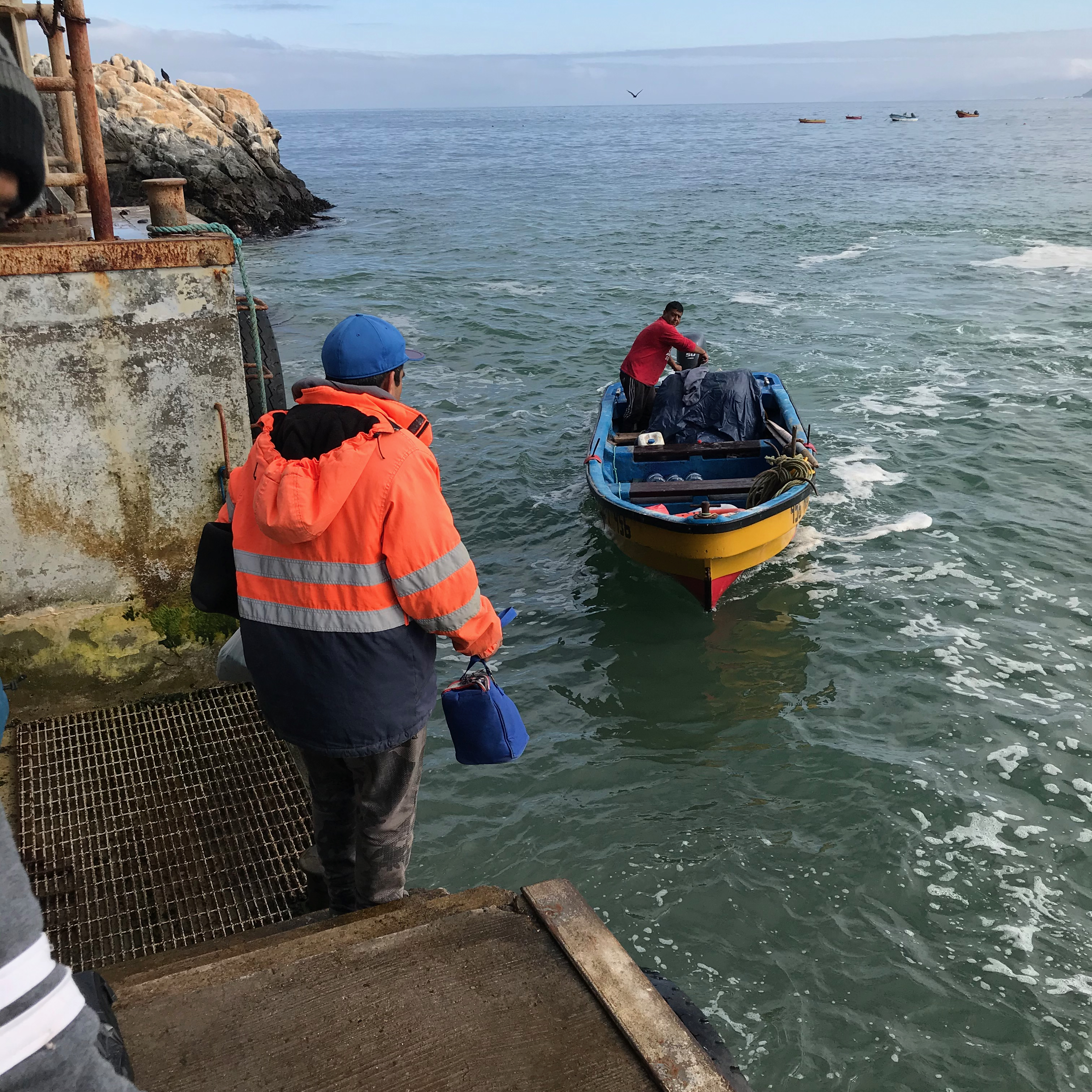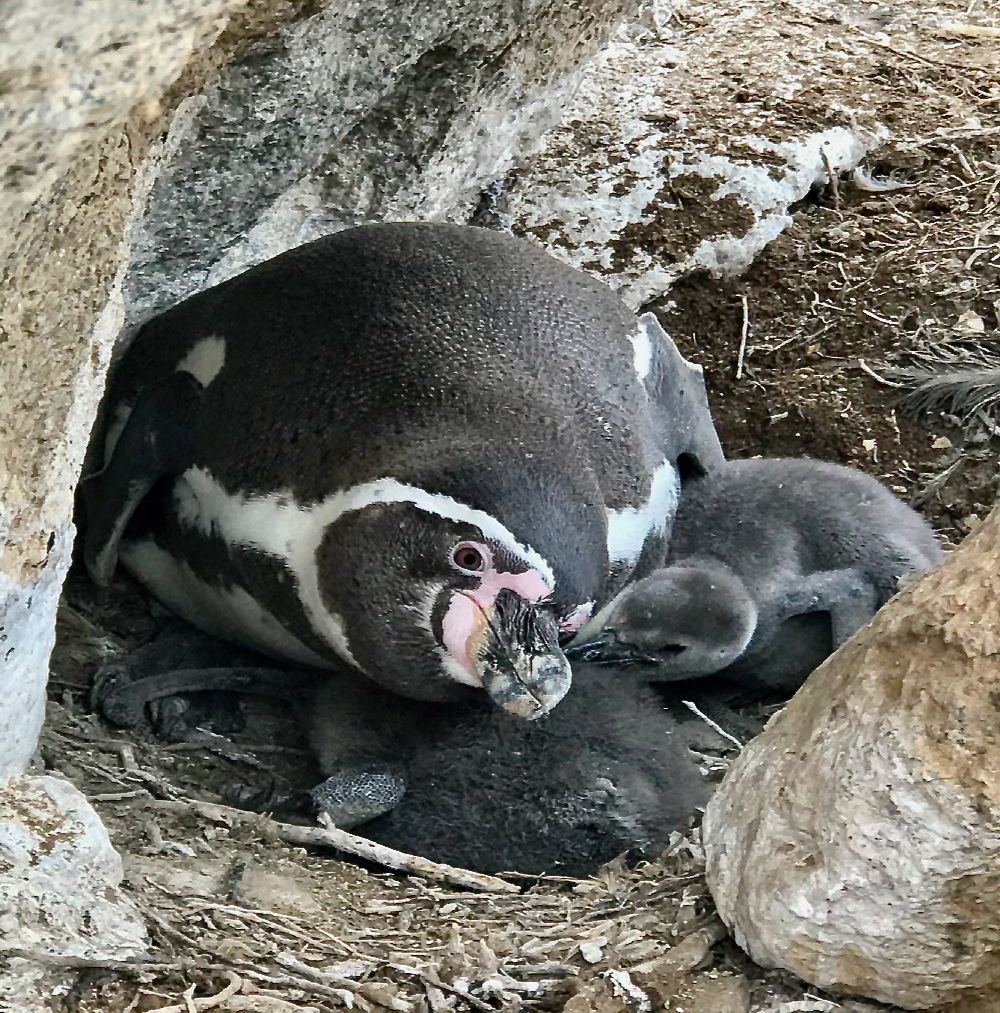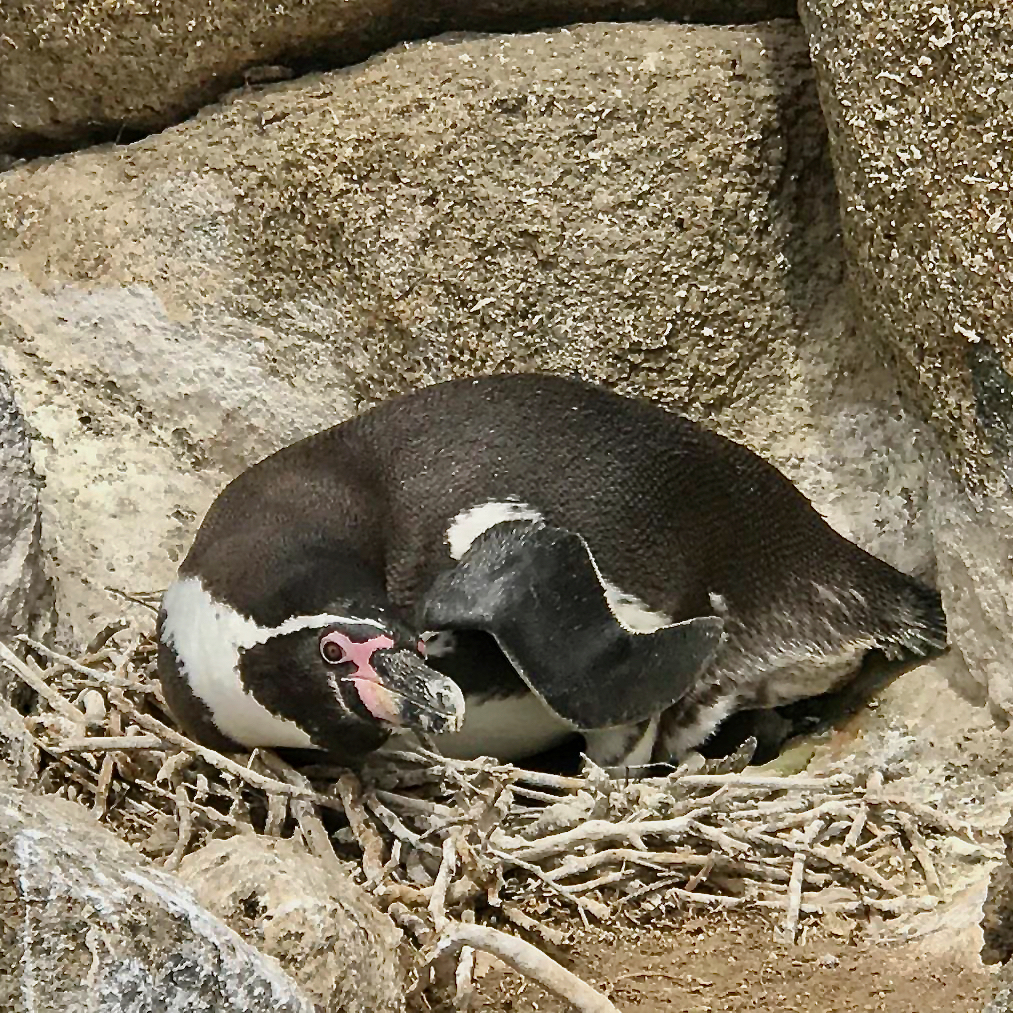Research for Survival – Initial Data
Landau 16. April 2022
In the past southern spring and summer, the first surveys were carried out in the six-year project, "Research for Survival" (1) (2). The research group led by Dr. Guillermo Luna (University of Coquimbo) documented the breeding success on the islands of Choros and Chañaral, while the group led by Dr. Alejandro Simeone (Andrés Bello University, Santiago) determined the population of breeding pairs on important breeding islands. Due to bad weather conditions, e.g., strong swells, only five instead of nine planned breeding islands could be counted. The omitted counts will now be made up for in April and May, 2022.
Census
The census figures so far, the "half-time result", so to speak, are frightening. For example, the researchers found only 161 and 381 breeding pairs on the two most important islands of Chañaral and Choros, respectively. In 2018 however, 1,045 breeding pairs were identified on Chañaral and 2,859 on Choros. On the very small island of Tilgo, the researchers counted 571 breeding pairs (in 2018 there were 97), and on the island of Pan de Azucar 162 breeding pairs (in 2018 there were 75). It is unclear how to explain the sharp "decline" of around 70% on the main breeding islands. Dr. Simeone assumes, among other things, that the figures for 2018 are due to methodological errors. The number of breeding pairs was determined at that time using distance sampling (a recognized scientific method for estimating the density of populations). This may have led to overestimations. In the current counts, the breeding pairs were traditionally counted, face-to-face, so to speak – directly at the nest. In addition, distance sampling was used to compare the results of both methods. It turned out that distance sampling leads to significant population overestimations.
The very positive result on the very small island of Tilgo is politically highly significant. Tilgo is located directly on the shipping route for the planned loading ports, so this penguin colony is particularly threatened.
Monitoring
The Luna working group examined 40 breeding pairs (active nests) on the island of Chañaral. Five of the nests (12.5%) were abandoned during the breeding season. The estimated breeding success for the colony was 1.03 young birds per nest (41 young birds / 40 monitored nests). On the island of Choros, the group studied 77 active nests. None of the nests were abandoned during the breeding season. The estimated breeding success for the island of Choros was 1.43 young birds per nest (110 young birds / 77 monitored nests). How the breeding success is to be evaluated with the rates of 1.43 and 1.03 must first remain open, since there are no comparative data. Only the future surveys will make it possible to classify the breeding success.
W.K.
Translated by Erich Greiner
Note
(1) The research work is funded by The Dresden Zoo, the Förderverein Tierpark Hagenbeck, Hamburg and the Species Protection Foundation of the Zoo Karlsruhe.
(2) see also article "Research for Survival" on this page





